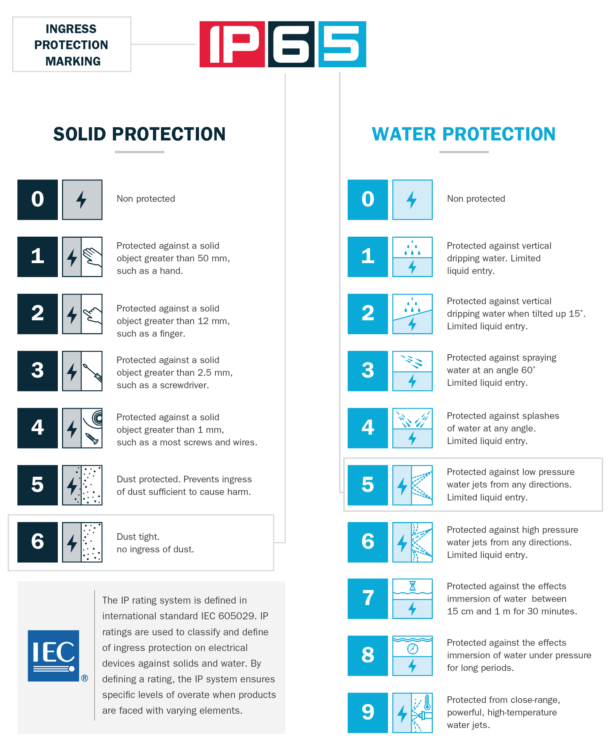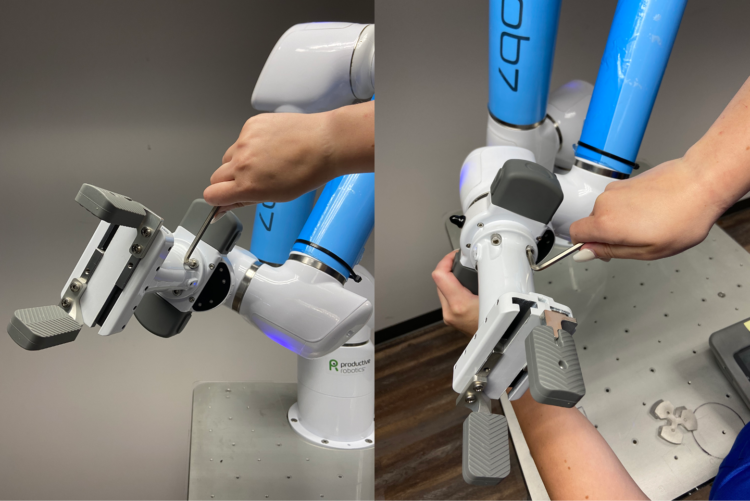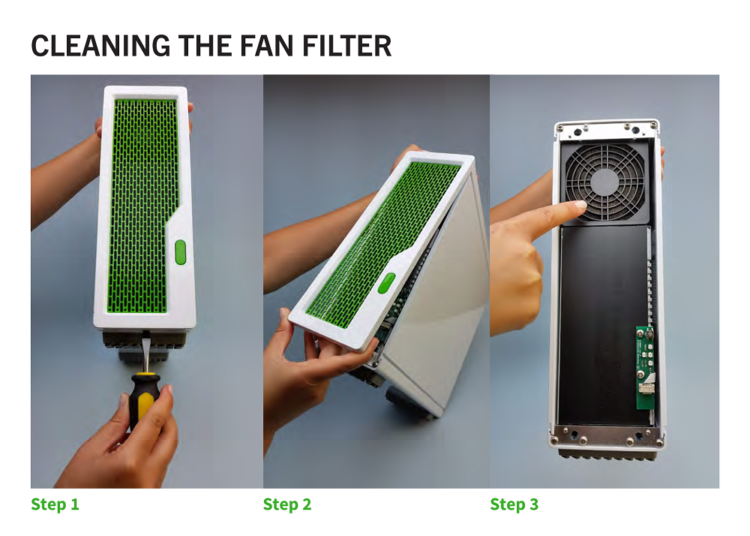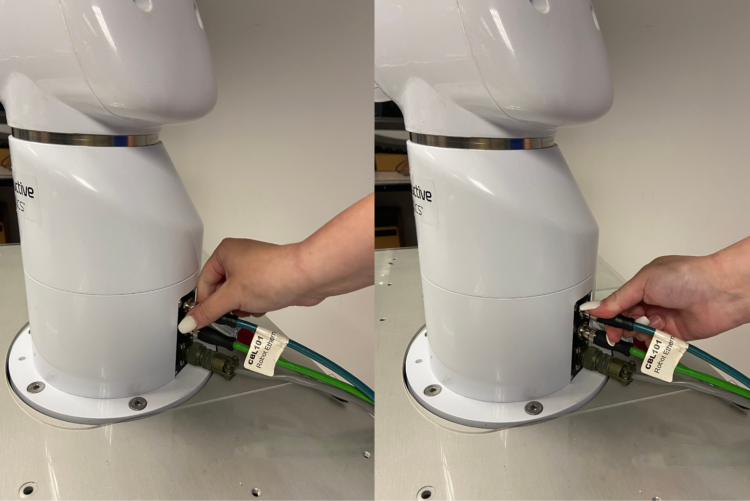Step 6: Successfully Implement a Cobot into your Operations
Do Cobots Need Maintenance Like Industrial Robots?
Everything mechanical eventually needs some type of maintenance, and nobody should tell you otherwise. Collaborative Robots, or cobots, typically don’t have to follow a maintenance schedule; however, they do require attention.
Cobots are used in a variety of ways and environments. Some environments are clean and don’t have to deal with metal chips, coolant, solvents, and airborne radicals. Unfortunately, that’s not typical in manufacturing where there is always some type of pollutant present, so keep this in mind when you are getting a new cobot or have one that’s been in production for some time and has had little to no attention.
Do IP Ratings Effect Cobot Maintenance Schedules?
To achieve optimum performance and longevity from a cobot, there are a few things one should do, especially if they are using their cobot in a wet or dusty environment. First, a cobot should be wiped down throughout the day to keep airborne particles and liquids from working their way internally through joints and wrist flanges. Even if your cobot’s IP rating is high, it is still a good practice.

The IP rating is an Ingress Protection or International Protection Code rating used to classify various levels of sealing effectiveness provided against such elements as water, dirt, metal, coolant, and moisture. The IP rating consists of 2 digits. The first digit concerns intrusion protection, such as dust and other solid particles. The second digit is characterized as a level of moisture protection. If a cobot is rated at IP64, that means it is totally protected against dust (6) and liquids splashed on it from all directions (4). However, the (4) in IP64 means that it is not protected against low pressure jets of liquid from all directions, as that would be indicated by a (5) — making it IP65 rated.
If the cobot has an IP68 rating, then it is totally protected from dust (6) and is submersible in liquids (8) for a long-term period up to a specific depth and pressure. The highest IP rating for the first digit is a 6, and the highest for the second digit is a 9. Thus, IP69 is total protection against dust, high-temperature steam-jet cleaning, and is submersible. The term submersible refers to immersion beyond 3 feet but does not necessarily mean waterproof. Waterproof ratings take into consideration length of submersion, type of liquid, temperature, and depth.
IP ratings are internationally set by the International Electrotechnical Commission, headquartered in Geneva, Switzerland. The Commission has been setting global standards since its inception in 1906 and works closely with the International Organization for Standardization (ISO), which is also an international standard-setting body that develops and publishes worldwide technical, industrial, and commercial standards.
Suggested Daily Maintenance Checks for Cobots
Operators should be required to perform daily maintenance checks at the beginning of each new operational period, including shift changes. The following are suggested by most major collaborative robot OEMs:

1) Check for peeling or chipped paint and cracks on covers. If there is an issue with the paint, be sure to touch up the area(s) to avoid further damage. If covers are cracked or broken, it’s best to take the time to fix and seal the damage immediately before operations begin. It is also highly suggested that new covers are ordered.
2) Check to see if there is oil or grease seepage on the cobot’s joints. Wiping these elements off the surface will help to prevent spotting, but also is an indication that you may be losing valuable oil and/or grease in a joint that requires it. Consider this as a warning to keep an eye on these levels to prevent wear on component parts. Oil/grease that is visibly seeping can also mean there is a crack in an O-ring, loose bolts, or potential crack in the casting. If there is a crack in the casting, that could have resulted from a crash and other components may have also been affected.
3) Check to see if there are vibrations or abnormal noises. This can come from a variety of sources such as a defective motor, inconsistent signals through a damaged cable, pinched or damaged power supply cable, foreign matter in a gear, bearing or joint, or a drop in voltage through its power supply causing the cobot to underperform. Vibrations and noises can also be caused by excessive load that has maximized or surpassed acceleration limits, inertia values, or payload rating on the unit’s arm.

4) Check ventilation system for potential blockage or excessive dirt. Just like anything else, proper ventilation is crucial to the integrity of all equipment. Chips, oil, and dirt can begin to build, causing contamination within the unit or worse cause the unit to overheat. Onboard chip fans also need checked to ensure they are operating at full RPM capacity and don’t have any blockages. This is especially true if there is an onboard computer present. Using a vacuum to remove these intrusions is always a good solution.
5) Check that all connections are securely in place. Cabling and other connections can become loose during operations. Performing this task will help to ensure nothing is loose that can affect production or cause the cobot to stop in the middle of a program cycle.
6) Check for alarms or other warnings and if any have occurred be sure to log the issue and ensure it has been resolved to avoid any repeats.
7) Check that the end-effector, or end-of-arm (EoAT) tooling, is secure and does not need tightened. During operations mounting bolts can become loose, which can cause issues at pick and place points.

8) Check installation bolts from top to bottom to ensure the cobot remains solid. This is important when a cobot is bolted into the floor or on a machine or table. Sometimes adhesives are used to help secure the bolts in place and over time can become less effective and allow bolts to loosen. Practicing this to ensure absolute security and integrity of the equipment can prevent not only damage to the cobot and other equipment, but individuals working close by.
9) Check for external damage. Every operator should log damage if it is visible on the cobot or its components. If damage has occurred, an investigation should take place to find out what caused the damage and was anything else compromised. This will help to avoid any repeat errors.
10) Finally, remember that the cobot should also be considered an operator. Your company has made a significant investment through money, time, and training to ensure production, sales and ROI are achieved as expected.
Get Help Implementing a Cobot
These periodic maintenance suggestions may seem lengthy and involved, but once implemented into a daily routine become quick and easy. They will also help to avoid regret. Cobots are a serious investment, and soon after they have been implemented into production become crucial to the process. Just as referenced in #10 above, cobots are becoming more readily used and are a crucial part of your production team.
Absolute Machine Tools has years of extensive experience in the cobot/robot automation arena. Our A+ Automation Team understands how to integrate a cobot, from exploring and guiding you to the right cost-effective solution, floor plan design, installation, integration, training, and after-sales support to final success. We are Absolute and we are here to help.



